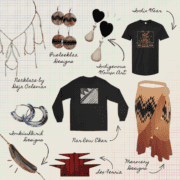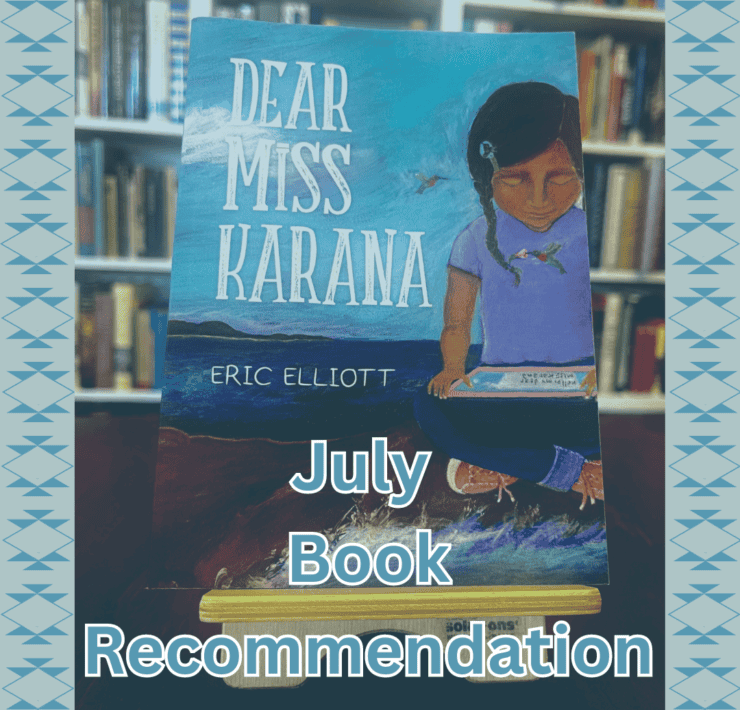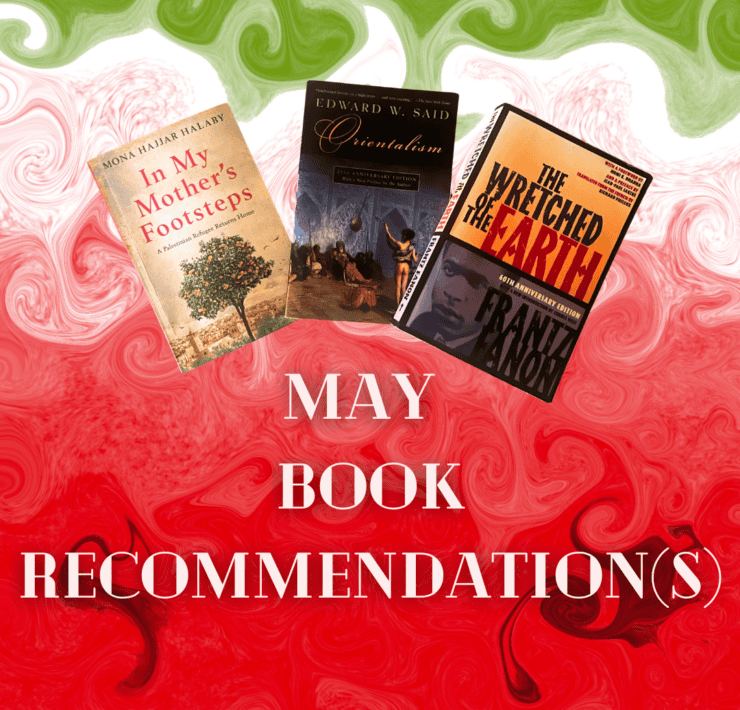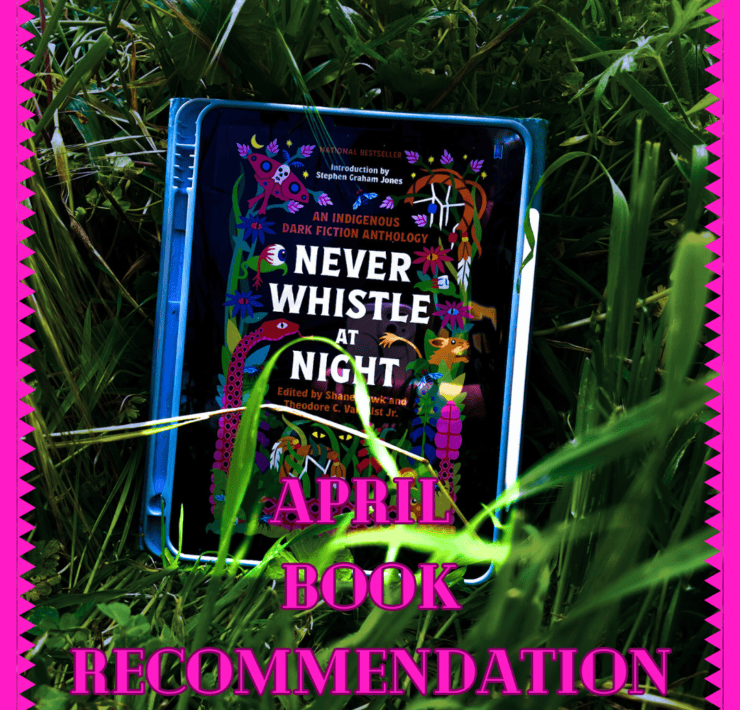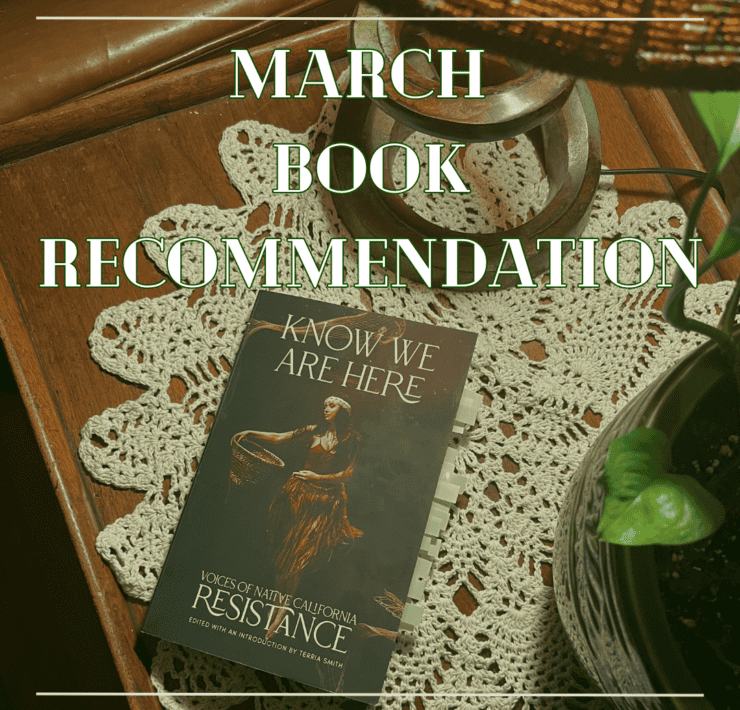
By Tavi Lorelle Carpenter
For the New Year, I’ve made a commitment to read more! There are so many incredible books I’ve been wanting to read, what better way than to share that with all of the News From Native California blog readers! For this series, each book has been selected for being either written by a Native author or about American Indian history. I will be centering California Indigenous narratives, though a couple expand into the wider US. Additionally, there will be one exception, but it’s a worthwhile exception!
For January I wanted to discuss a book that admittedly, was a re-read for me. It is a bit of a classic and one I’m sure readers have heard of before. Nevertheless, I wanted to share this book because it is one I enjoy revisiting and have a special relationship with.
Originally published in 1981, The Way We Lived: California Indian Stories, Songs and Reminiscences Edited with Commentary by Malcom Margolin is a collection of, as stated, stories, songs and memories told by California Indian people across the state.
I first read this during my undergraduate summer fieldwork where I was looking into personal experiences of California indigeneity. Like many of the books I was reading during that time, I had originally selected it as a means of expanding my understanding. Eventually, I would continually return to it enjoying the format of short form storytelling told in each individual’s unique voice. I was reading a lot of difficult history at the time and I found it comforting to read something that looked to celebrate the richness of California Indian people and the diversity of our cultures.
This book has a very strong connection to News From Native California and Heyday books. In fact, if you are interested in purchasing your own copy, you can visit Heyday’s website and pick up the 35th anniversary edition.
The Way We Lived is a collection that was put together by Margolin out of the vast collection of linguistic and ethnographic materials gathered by linguists and anthropologists as part of what they saw as preserving what they had seen as declining cultures and languages. There is a lot that I could say about the nature of salvage anthropology, namely that it is exceptionally problematic. But I’ll leave that for another day. I just bring it up because of something Margolin includes in the introduction in the second edition printed in 1993, which is the version I own.
In this version, Margolin notes how he had “originally conceived of California Indian culture as having been complete at the time of contact with Europeans” but after co-founding News From Native California, alongside David Peri (Coast Miwok) and Vera Mae Fredricksonin 1987, he came to understand how this couldn’t be further from the truth. I appreciate that he includes this comment as it not only highlights a common narrative that is still regularly touted but additionally, how representation can change incorrect perceptions.
The stories, memories and songs are divided into different life themes such as growing up, or growing old or the challenges of love. In many ways, there is an ethnographic feel to the book, in that it is giving insight into different aspects of the human experience. Alongside the indigenous voices, Margolin offers commentary that serves as contextualization and at times, history that may not be widely known.
The Way We Lived is very much connected to the experience of reminiscing on the past. In fact, I saw a description noting that the book shows an illustration of California before settler-colonialism. I actually deeply disagree, I think it is more representative of all that’s remained in spite of the best attempts of settler-colonialism to eliminate California Indigenous cultures. In fact, the last section entitled “The Present”, reflects on the challenges and success of self-determination that was occurring notably during the late 80s and early 90s.
This book felt like a good place to start with this new series as it is not only a classic, tied specifically to News From Native California, but because it is what I call, meant to be read (or spoken aloud if you are reading with others). This is the kind of book one can take their time with and start at any point, there’s no correct way of reading it. One does not have to read it from beginning to end, one may start where they will. During my re-read of this book, I started with my favorite sections before finally going back and reading the introduction for the first time.
What is so appealing about the book is the fact that you are reading the voices of California Indigenous people, where their perspective is being centered. It is a reminder that the process of sharing stories, songs and memories is how we stay connected to one another and ourselves.
To get a copy of The Way We Lived: California Indian Stories, Songs, & Reminiscences edited with commentary by Malcolm Margolin visit: https://www.heydaybooks.com/catalog/the-way-we-lived-california-indian-stories-songs-and-reminiscences/


